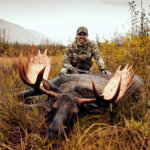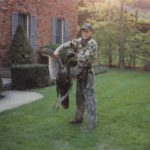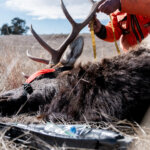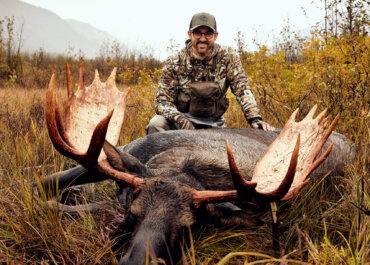Our Arkansas outfitter, Brian, has been a vetted and approved outfitter for WTA for a long time. Each year, dozens and dozens of WTA clients hunt with him for ducks, geese, and deer. His operation is top-notch, and in addition to phenomenal hunting properties, his hunters enjoy excellent lodging, food, and drinks. Brian and his team consistently receive very high scores when WTA hunters complete their After-Hunt evaluations. Many of his clients come back year after year. Brian’s typically full each season, so if you’re interested in hunting his properties for big game or waterfowl, you’ll want to reach out to WTA ASAP to get your spot reserved.
We left the lodge early on morning one. Our guides, Slim and Billy, set us up in an elevated blind. The stage was set for my first-ever classic Arkansas duck hunt in flooded timber. Unfortunately, no ducks came within range. It was encouraging to hear a few shots nearby, yet even those were few and far between.
We returned to the lodge for lunch and made plans for a Specklebelly hunt that afternoon. When we arrived at the Speck fields, I couldn’t believe what I was seeing—there were tens of thousands of Specks in the air. We set up layout blinds in some tall, got in and waited.
Slim was our caller for this hunt. Although his physique matched his nickname, he packed some powerful lungs—and boy, could he blow a Speck call. The Specks were flying in groups of hundreds. They would come in to Slim’s calls and check things out, but then turn away. Thousands of birds flew past us and landed in another rice field about half a mile away.
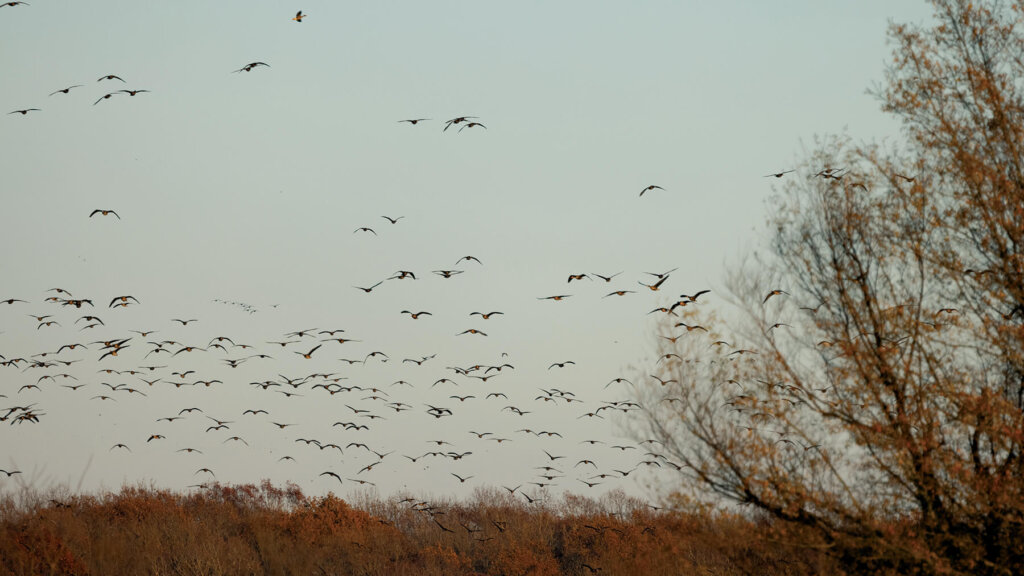
Unfortunately, no shots were taken on day number one. The Specks preferred what they saw and heard in the other field. With only two days remaining, and zero birds checked off my list, the pressure was on.
We went out to a different blind in the flooded timber for our second morning’s hunt. Although there weren’t many ducks in the air, we managed to drop a couple of Mallards and some Gadwalls, and I shot a large Ring-necked drake.
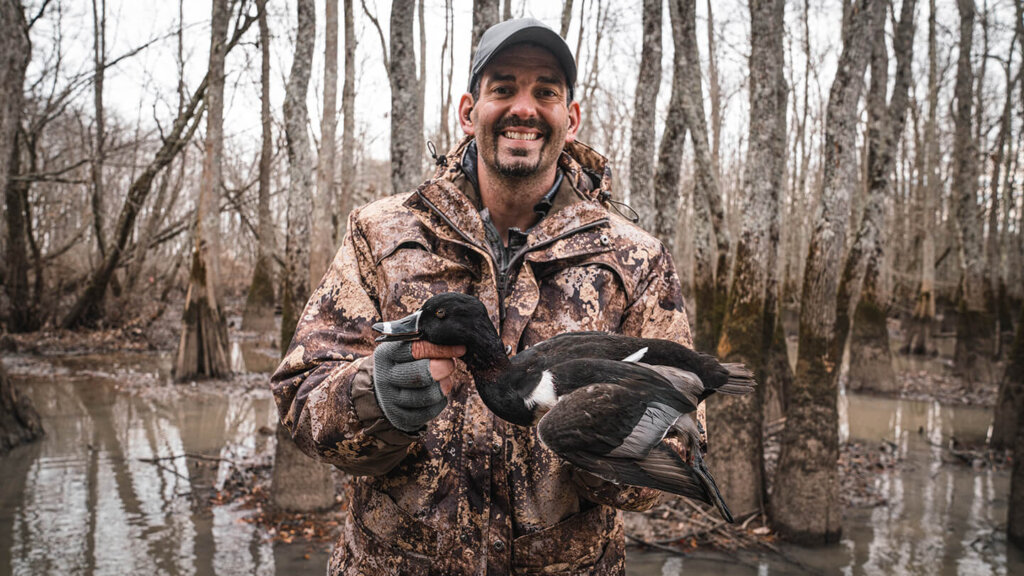
Later that morning, a single drake Wood Duck suddenly flew in and landed about 125 yards away from the blind. Our first target species had finally showed up, but he swam away from the blind. I was determined to check a Wood Duck off my Waterfowl Slam list that morning, and decided I would try to stalk this duck. I slowly walked, from tree to tree, in his direction. I don’t know if the drake heard or saw me, but before I was within shooting range of him, he flew. He made a wide swing, and flew back in front of the blind. Dad saw him, but missed on a fast shot at around forty yards. Since there were no more ducks in the air, we returned to the lodge for lunch.
While we ate, the sky opened up and it started raining hard. The storm was forecast to continue for the next twelve hours. Our plan to hunt Specks in the afternoon was canceled. We were halfway through our Arkansas hunt and none of our target waterfowl were down.
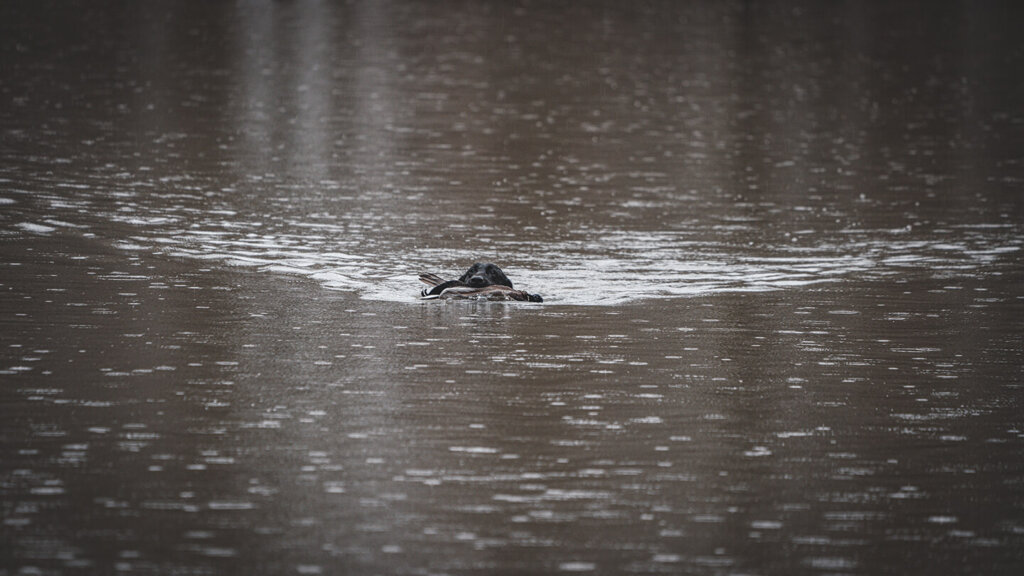
Our options were extremely limited because of the rain. We decided to go with our backup-to-the-backup plan, which was to drive around looking for ducks on small ponds. Through a narrow opening in some brush near one of the ponds, we saw ducks that we thought could be Hooded Mergansers. We stopped, but it was too late—they had already seen our vehicle. They flew away. We confirmed that one of them was a drake Hooded Merganser. We went to a nearby pond and spent a couple of hours sitting on it. We eventually had enough of the downpour and decided to head back to the lodge.
The weather had cleared the next morning. Billy had gotten us the go-ahead to hunt diver ducks at some ponds on a fish farm. We left the lodge well before daylight so we could be set up and be ready to hunt when legal shooting light came. The manager of fish farm explained that they wanted hunters to help keep the diver duck population as low as possible. Diver ducks are natural predators of fish, so you can imagine how disruptive they can be when attempting to operate a fish farm.
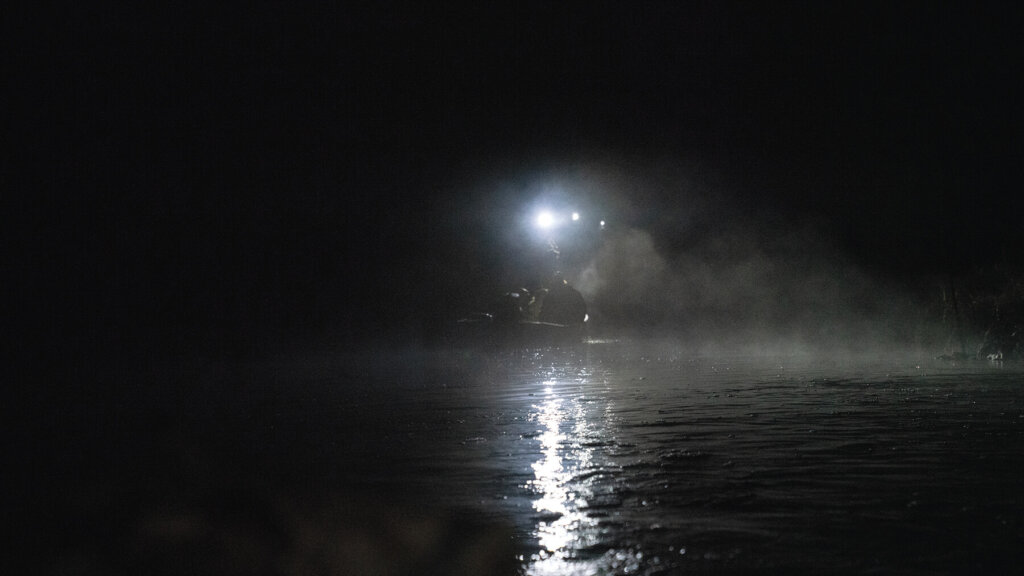
We selected a pond and put a few decoys out. We were the only duck hunters on the ponds that morning. Without anyone else shooting, the divers stayed where they were safe and ate fish. We finally had a pair come in, and Dad and I each got our Lesser Scaup. With the day still young, and still seeking a Speck and a Hooded Merganser, we opted to get after some species that I needed to check off my list. We decided my best opportunity would be Specks in the rice fields.
We had put in a good morning of hunting and looked forward to a late breakfast back at the lodge. On our way there, we decided to check out the pond where we had seen the three Hooded Mergansers the day before. I am always up for a quiet stalk, so we parked well out of sight of the small pond and I slowly eased my way toward it. There were three Mergansers on the pond, and they flew once they saw me. I picked out the single drake, took a shot, and he fell. The plan worked perfectly, and I had my second Slam duck of the day, putting me at twenty-seven species. It was a good thing I didn’t miss because those Hooded Mergansers were the only ones I saw on my entire quest for the Waterfowl Slam.
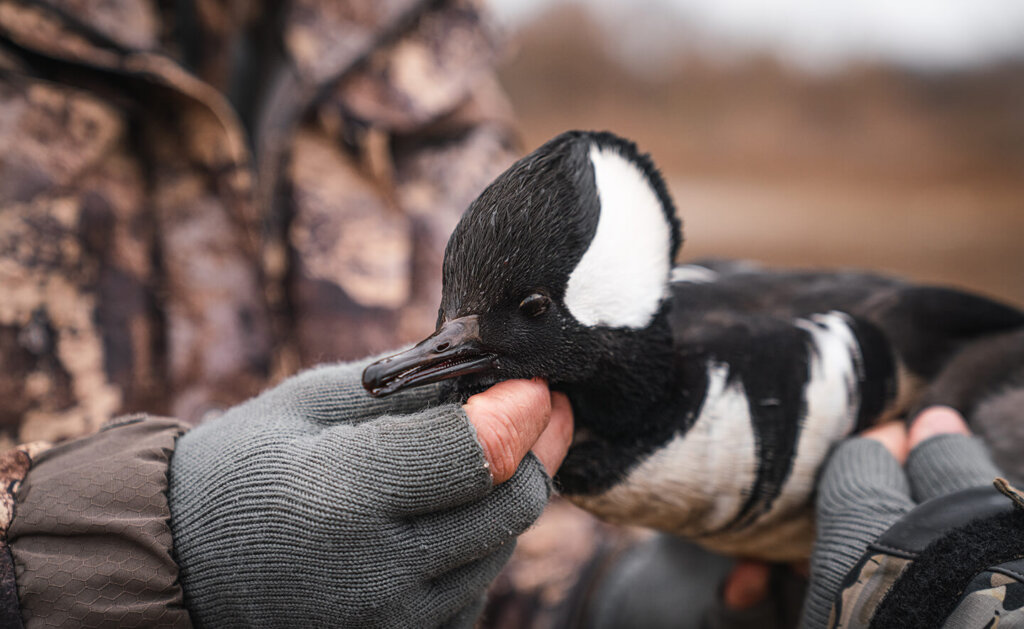
After our late breakfast, we went back to hunt for my last Arkansas target species, a Specklebelly. We set up on the field we had scouted earlier that morning. Our setup looked perfect. We were all down, covered up, quiet, and waiting with three hours of shooting light left.
There were thousands of Specks flying all around us and flocks of hundreds coming close, but none were setting their wings or flying low over us. They stayed just outside of shotgun range. Again, we were set up at the wrong spot as they started landing in a different field about half a mile away. Not again, I thought. There was no good reason for the birds to bypass us. Our decoy spread and calls just couldn’t compete with live birds.
With about fifteen minutes of shooting light remaining, It wasn’t looking like I’d get a Speck checked off my list. Suddenly—and I admit, extremely unexpectedly—a pair of Specklebellies came in from behind us. As they came in from the right, I knew I would only have one chance. I popped up, leaned back, and took a single shot. The Speck fell out of the sky. When that bird hit the ground, all six guys in our line of layouts started hooting and hollering. I had my third Arkansas target, number twenty-eight of the Waterfowl Slam. Dad always tells me, “It helps to be lucky.” It sure does!
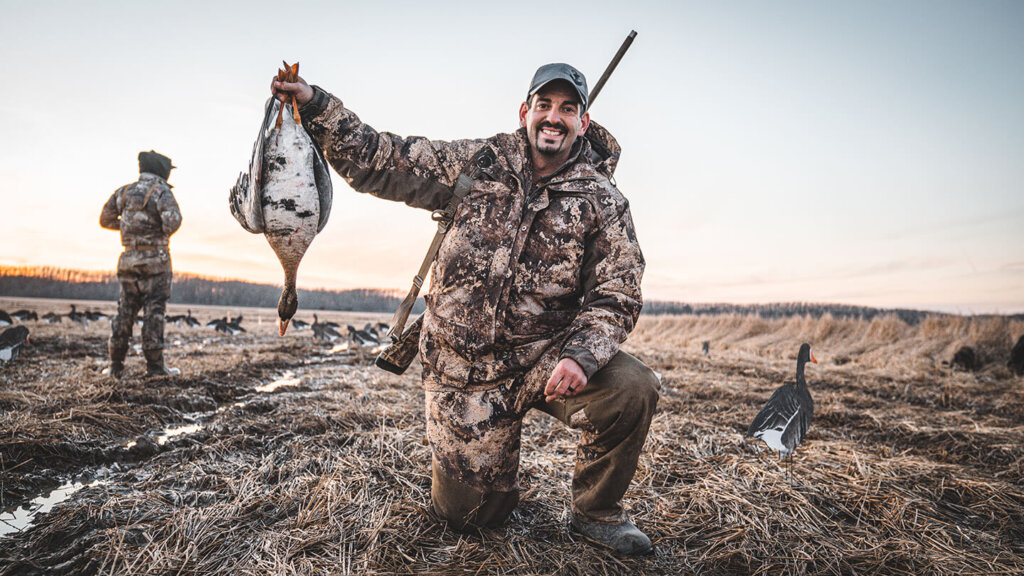
We left Arkansas the next morning. I had fifteen waterfowl species to go for a successful North American Waterfowl Slam in a single season. It was going to be tough, but like Dad said, “It helps to be lucky.” I was certainly going to need some more of that luck.



